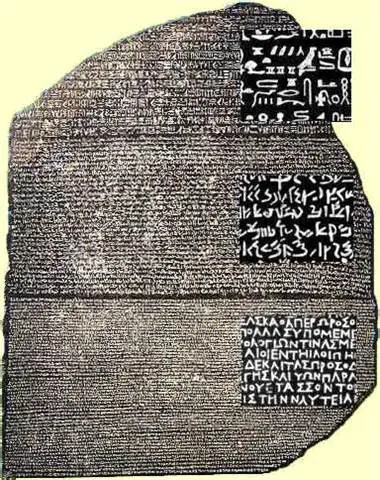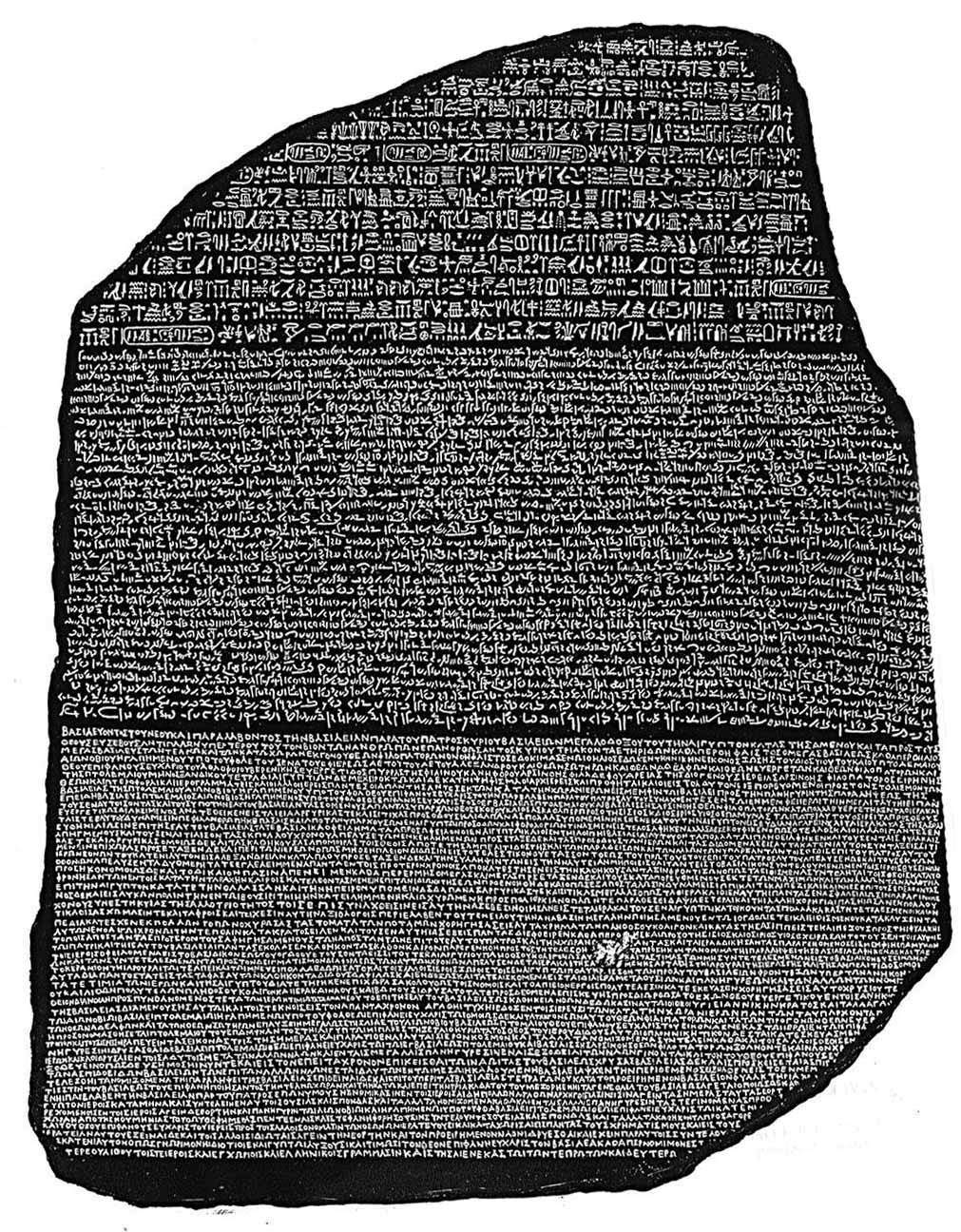The Discovery and Importance of the Rosetta Stone
The Rosetta Stone, a 1700-pound piece of rock (called a stele) discovered in the sands of Egypt, was the key to modern understanding of ancient Egyptian hieroglyphs. The Stone, discovered in 1799 by a soldier in the French army headed by Napoleon Bonaparte, contains essentially the same text in three different languages: Ancient Greek, Demotic, and hieroglyphs. A full translation of the Greek versions was completed in 1803, but it was 20 years before linguists worked out the details of the hieroglyphs. Bonaparte became leader of the French army and people in the late 18th Century. Because of the French Revolution and other European governments' opposition to it, France was at war with most of the other European powers for two decades. Because Bonaparte was the central figure in this series of conflicts, they are often called the Napoleonic Wars.
In 1801, British troops defeated the French forces in Egypt. Part of the settlement after this battle was that Britain gained control of the Stone and of other artifacts. Beginning the following year, the British Museum had the Rosetta Stone on display. But at that time, neither the British nor the French really knew what they had found. The use and understanding of hieroglyphs had gone out of fashion in the early centuries A.D. A few Arab historians made an attempt in the 9th and 10th Centuries but without success. A few more European historians tried again in the 16th, 17th, and 18th Centuries, still without success. The discovery of the Rosetta Stone renewed an interest in understanding hieroglyphs, and historians and linguists tried again. Scholars still understood Ancient Greek but struggled initially with the administrative technicalities of the language on the Stone. A British translation of the Ancient Greek text was available in early 1802. The following year, French linguists, working on a copy of the text made after the initial discovery, produced a copy in both French and Latin. Meanwhile, a French linguist had recognized some of the letters on the other non-hieroglyph set of writing as belonging to what came to be called Demotic script. Characters written in this script had been found in Egypt and were similar to the Coptic language, which had begun in the area in more recent times. A French scholar, Antoine-Isaac Silvestre de Sacy, reported identifying in the Demotic script the names of five people, including Alexander the Great and Ptolemy I. Silvestre de Sacy did not work on the translation further except to remark to one of his colleagues that names in hieroglyphs might be written phonetically. This supposition was based on work done by previous French scholars. A British researcher took the French suggestion to heart and succeeded in identifying several similarities between the Ancient Greek text and the Demotic script. Until that time, researchers in all countries had believed that the texts were independent of one another. 
Another French scholar was the one who ultimately cracked the code. Jean-Francois Champollion had, in 1814, identified the phonetic characters spelling the name of Cleopatra in two inscriptions on a famous obelisk. One inscription was Greek, and the other was in hieroglyphs. Champollion turned his attention to the Rosetta Stone and eventually found similarities for the pharaonic names Ramses and Thutmose. In 1822, he announced a full translation of the hieroglyphs. The Frenchman eventually constructed a hieroglyphic dictionary and a grammar of Ancient Egyptian writings. Many historians now think that the Rosetta Stone text was written in three languages so that most Egyptians could understand it. Ancient Greek was the language of the pharaohs at the time the Stone was carved, 196 B.C. Demotic was the common script of Egypt at the time. And, of course, hieroglyphs were the language of the priests. The text itself is a list of all the things the current pharaoh, Ptolemy V, had done so far in his reign. The Rosetta Stone is part of a larger stele that fragmented in the centuries it was buried. Thanks to the efforts of Champollion and other scholars, everyone can now understand ancient Egyptian hieroglyphs. |
|
Social Studies for Kids
copyright 2002–2025
David White



 The French presence in Egypt intensified as the 18th Century was ending. French troops claimed ownership of large parts of Egypt. While building forts in the area, French troops found the Stone, near the Nile-delta town of Rashid, also called Rosetta. The Stone, 45 inches high, 28.5 inches wide, and 11 inches thick, was one of many artifacts unearthed by French forces.
The French presence in Egypt intensified as the 18th Century was ending. French troops claimed ownership of large parts of Egypt. While building forts in the area, French troops found the Stone, near the Nile-delta town of Rashid, also called Rosetta. The Stone, 45 inches high, 28.5 inches wide, and 11 inches thick, was one of many artifacts unearthed by French forces.
